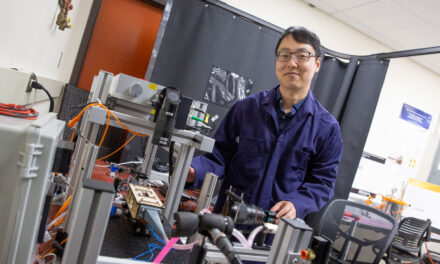
Navigating the nuance of negation
ASU’s Eduardo Blanco works to improve computer understanding of human intent

Above: Many complexities of human language challenge even state-of-the-art machine translation systems. Solving problems of misinterpretation is the work of Arizona State University Associate Professor Eduardo Blanco, who is applying a National Science Foundation CAREER Award to advance computer understanding of what people want, which is not always the literal meaning of the words they use. Image courtesy of Shutterstock
English and most other human languages apply a feature known as negation. For example, the sentence “Sarah never leaves her house in the morning without coffee” includes two negations: never and without. But the most common interpretation of this sentence is positive. People infer that Sarah does actually leave her house — after coffee.
“Roughly 20% of sentences in English use one or more negations. So, they are very common. Even young children understand and use them,” says Eduardo Blanco, an associate professor of computer science in the Ira A. Fulton Schools of Engineering at Arizona State University. “But computers find it incredibly challenging to comprehend negation in human or natural language. Even state-of-the-art machine translation systems experience substantial drops in performance when faced with negations in textual inputs.”
Blanco is an expert in natural language processing, a subfield of computer science that seeks to design algorithms and models that enable machines to better understand people. His research within the School of Computing and Augmented Intelligence, one of the seven Fulton Schools, centers on computational semantics or the construction of meaning representations from text such as human-generated questions.
“As we build intelligent systems to collaborate with people and augment our capacities, natural language may be the best way to interact with them,” Blanco says. “But seamless interaction means understanding what people want, which is not necessarily the literal meaning of the words they use.”
He offers an example in which a virtual assistant informs someone that they missed a phone call. The assistant asks the person if they want to call back. The user responds, “No, I can’t talk right now. I’m in a meeting.” The intelligent system behind the virtual assistant should realize that the user would like to call back at a later time, but current systems are not likely to capture this nuance.
Additionally, it’s not the case that negations always mean “yes” after a given event, sequence or time period. Sometimes they mean “no” in an absolute sense, making interpretation very complex.
Blanco is working to advance machine understanding of these subtleties of human communication, and his efforts have secured a National Science Foundation Faculty Early Career Development Program (CAREER) Award for research that began in 2019.
CAREER Award recognition is reserved for young researchers who show the potential to be academic role models and advance the missions of their organizations. Awardees receive approximately half a million dollars over five years to further their highlighted research.
Blanco’s project has three thrusts. The first one creates a comprehensive collection of negation types across several domains and genres, as well as their positive interpretations. This effort has also been exploring strategies to account for different degrees of granularity in meaning, since doing so will minimize the annotation effort and the need to rewrite potential positive interpretations.
The second thrust is developing computational algorithms that will automatically generate positive interpretations from uses of negation. These operations also need to learn representations of context and discourse, and then leverage them to identify the foci of negation and rewrite them with relevant positive counterparts.
The final thrust of Blanco’s work consists of extrinsic evaluation, by incorporating negation into the tasks of recognizing entailments and inferring spatial timelines. Entailments are logical consequences. To say that “Maria put on her red hat” entails that she has a hat. But to say that “Maria does not have a red hat” neither entails nor contradicts her having one or more hats. The ability to recognize entailments or their absence is vital to effective communication, and computers still struggle on this front.
Blanco says he has always been fascinated by language and how humans communicate with each other without the need to spell everything out. He also says that achieving the potential of augmented intelligence to advance industry, the economy and society as a whole requires moving machines toward a similar level of understanding with us.



































